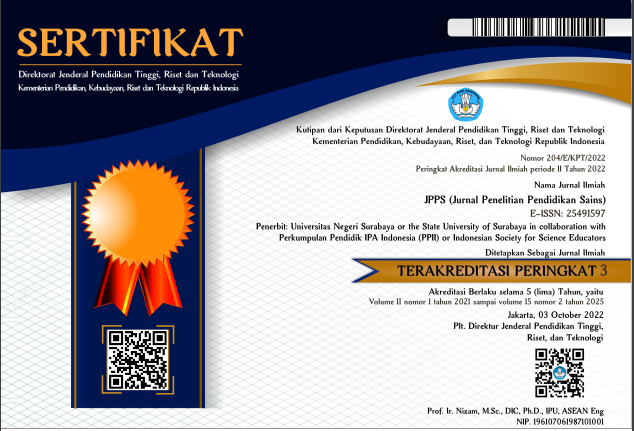FLIPPED CLASSROOM TO FIND AND STUDY JOURNALS AS WELL AS IMPROVING SCIENTIFIC LITERACY IN MIDDLE STUDENTS
DOI:
https://doi.org/10.26740/jpps.v10n2.p1960-1967Keywords:
flipped classroom, scientific literacyAbstract
The foundation of attitudes, knowledge, and skills for students is the foundation of scientific literacy. The benefit of the flipped classroom model is that students can learn outside the classroom so that learning in the classroom is effective with literary discussions. Students were given the task of watching videos about how to find and study journals about student digestion health. In the classroom, students work in groups to practice their knowledge and skills based on the videos they have learned. Furthermore, students were given a survey on the effectiveness of the video to deepen their knowledge and skills. One hundred and twenty students completed the survey and the results showed that the students found the video very helpful in searching and studying journals. The result was that students térbanti in 86% searched and 77% studied journals. Students claim that learning outside the classroom through video helps them with assignments (90%), the information obtained can be applied at other levels (87%) and they prefer to learn via video outside of the classroom to learn in class (63%). Students can acquire scientific literacy knowledge and skills through the flipped classroom methodology, especially watching videos.Downloads
References
Roach, T. (2014). Student perceptions toward flipped learning: New methods to increase interaction and active learning in economics. International Review of Economics Education, 17(1), 74-84.
Kementerian Pendidikan dan Kebudayaan. (2017). Materi pendukung gerakan literasi nasional. Jakarta.
Downloads
Published
How to Cite
Issue
Section
License
Copyright (c) 2021 JPPS (Jurnal Penelitian Pendidikan Sains)

This work is licensed under a Creative Commons Attribution-NonCommercial 4.0 International License.
 Abstract views: 429
,
Abstract views: 429
, PDF Downloads: 306
PDF Downloads: 306












